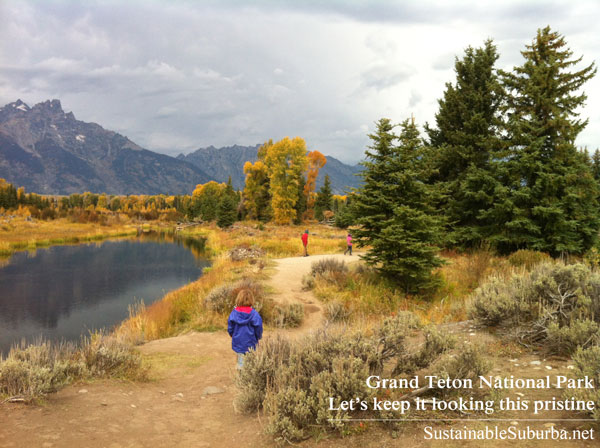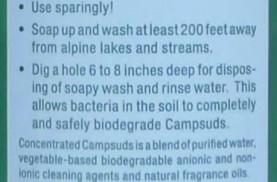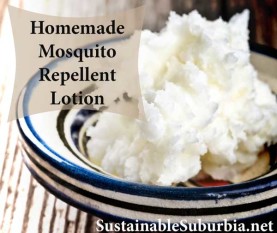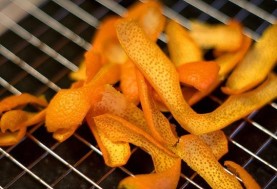Last updated on January 31st, 2023 at 04:46 pm
Most people, when they’re going camping, prefer to have as little impact on the environment as they can. And yet it’s also a time when many of us allow ourselves to use disposable products we might avoid otherwise. We are out of our comfort zone and it can all feel a little hard. Here are 8 tips for what to take for a more sustainable, eco-friendly camping trip.

1. This should go without saying by now, but make sure to take reuseable water bottles and (if necessary) coffee cups. Did you know that Australians spend more than half a BILLION dollars per year on bottled water?
Only 36% of Australian PET drink bottles are recycled. The rest end up either in landfill, or littering our oceans. And even for those that are recycled – they still have to be made first. For more information on how many tonnes of CO2 this uses, or the INCREDIBLE amount of fossil fuel used up in producing bottled water, see http://oceancrusaders.org/crusades/plastic-crusades/plastic-statistics/. Trust me, you will be shocked.
We took with us two stainless steel, leak-proof thermal cups that we used interchangeably for coffee or water, and two 1 litre water bottles, and a smaller bottle for Elli (Ms 4). We never needed more water than that on a hike, since we generally stuck to trails that Elli could manage, at least if we were all going. For longer hikes, it is often recommended to bring 2 litres of water per person.
2. Save on disposable paper towels, and instead bring a few Norwex tea-towels & kitchen cloths. I brought two of each, and for a weekend camping trip that would have been fine, but for our Road Trip, I’ve wished I had more. I was imagining using them just for doing the dishes, but they were also good for mopping up spills, wiping dew off picnic table and benches, wiping dew or rain off the tent before packing it up, and so on.
The kitchen cloths are made from the same fabric as the kitchen towels and they are SUPER absorbent, which is what makes them so great – along with the silver for self-purifying or course, and the amazing cleaning properties of the microfibre. Here is more information.

3. Take a Norwex Sports towel or similar. I love the sports towel because again, it is HIGHLY absorbent, and yet at the same time it dries out very quickly, and it rolls down to almost nothing. Back in my backpacking days, I used those small square or rectangle microfibre towels from outdoor stores, which do all the same things, but being so small they aren’t as useful for, say, drying your back off, as the larger (but thinner) sports towel. Yet the sports towels packs down smaller!
The sports towel also wraps right around my four- and eight-year-olds, which makes them happy.
I kept a sports towel in my backpack, in it’s own little mesh bag, at all times, and was often glad of it. I actually even take these on everyday picnics and just about ALWAYS end up using it. But if not, it’s so small and light, it doesn’t matter.
Why do I include these in “sustainable” camping? Well, smaller, quick drying towels means less washing and drying – something you will mostly do when you get home, but we had to do as we went. Also because they are so absorbent, you can get away with two people sharing one, although they are so small I wouldn’t really bother. Instead bring one each, and know that you will also use them for soaking spills when you are out and about, perhaps for a hair towel, or even for a beach towel on occasion!
4. A low-suds, bio-degradable dishwashing liquid. Of course, I would recommend the Norwex dishwashing liquid, but Dr Bronner’s natural soap is another good choice, and can double as a body soap (though see #6 below).
The important thing to remember is that if there is no camp sink to pour your dirty water down, using a “safe” dishwashing liquid does NOT mean you can tip it into a river afterwards. If you are backcountry camping, then any dishwashing water should be disposed of at least 200 feet (about 60 metres) from any water, and in a hole you have dug, about 15-20 cm deep. Luckily, for the sort of camping we are doing, most of the time there is a camp sink!

5. Natural Bug Spray! Here’s my recipe for a lotion and review of an Australian bug spray I like. DEET is a nasty chemical that is in most commercial bug sprays. Is it effective? Sure. Is it toxic to use? Also yes.

6. Norwex body cloths, instead of both soap and wipes. That’s right, with these amazing microfibre cloths, you can stop using any kind of soap or body wash forever. You can even give away your facial cleansers, though if you have sensitive skin or use a lot of makeup, you may prefer the makeup removal cloths for your face. But I digress.
It’s important to remember that any products we are washing away down the sink or shower can have a negative effect on the environment, and even more so if you are washing “au natural” while back country camping. Now, my family has switched to using these body cloths instead of soap or body wash even at home, but how much more important is it while camping?
Another bonus – they weigh heaps less than bottles of body wash, and they don’t leak!
You can also use these instead of wipes. I keep them in two ziplock bags – one for dry, one for wet. [edited, years later to add: now I use this wet wipes bag, with two waterproof compartments, instead of two zip lock bags.) I packed a set of the baby cloths for this, which are a bit smaller and make great wipes for my grotty kids. Just pour a little water onto them from your water bottle and they do an awesome job of cleaning dirty, sticky hands, faces and even car seats!
Here’s my earlier review of these cloths. And another post on why the body cloths are so good for acne.
7. Your own non-toxic fire starters. Avoid the noxious fumes from toxic fire-starters, by making your own before you go. Now, I admit this doesn’t work if you are taking a several month road trip around the country. Then you might have to make sure to have sufficient kindling and paper, and build your fire the old fashioned way (my kids have loved doing that with me).
But if you are planning a trip in a little while, you can make your own fire starters with dryer lint & old candles, and an old egg carton. Instructions here. OR if you don’t have any dryer lint, because you know – you are trying to save electricity, and all your clothes are dried on the line, you can use shredded paper or sawdust, just as effectively.
Another option is to save and dry your citrus peels. Yes, I have given you other things to do with your used citrus peels, but if you have some left over, try drying them and using them in your fire. They burn *really* well and smell good! Not that it’s hard to do, but here is more from apartmenttherapy.com.

8. Finally, take a set or two of these sandwich wraps and snack bags (you can buy them individually too). We have found them invaluable for packing lunches and wrapping up leftovers, without ever resorting to buying cling wrap (and we are now 3 months into our travels!).
Do you have any unexpected tips for what to take on a sustainable camping trip? Share them in the comments!



These are great tips. I think it is important to try and leave no footprint when you go camping. Very interested to go see your insect repellent recipe. Thanks.
No worries, thanks for stopping by Malinda.
These are great tips. I think it is important to try and leave no footprint when you go camping. Very interested to go see your insect repellent recipe. Thanks.
No worries, thanks for stopping by Malinda.
Those non toxic fire starters are great and when I have gone camping, pre-kids I was very careful to take out what I brought in and not leave a mess. But it’s easy to do when you don’t have anyone else to look after but yourself! Emily – visiting from #teamIBOT
Yeah, kids makes a world of difference! To packing up time too – it took us a while to get pack up time down!
Those non toxic fire starters are great and when I have gone camping, pre-kids I was very careful to take out what I brought in and not leave a mess. But it’s easy to do when you don’t have anyone else to look after but yourself! Emily – visiting from #teamIBOT
Yeah, kids makes a world of difference! To packing up time too – it took us a while to get pack up time down!
I like the idea of the body cloths instead of taking products. Though most of our camping takes place at the beach and we just bathe in the ocean.
You’ve given me lots to think about. I will often have paper plates on hand just in case for camping, but that’s probably not the greatest idea.
It’s always hard to balance that desire for convenience with sustainability. And I’m not by any means saying we are perfect. Just trying.
I like the idea of the body cloths instead of taking products. Though most of our camping takes place at the beach and we just bathe in the ocean.
You’ve given me lots to think about. I will often have paper plates on hand just in case for camping, but that’s probably not the greatest idea.
It’s always hard to balance that desire for convenience with sustainability. And I’m not by any means saying we are perfect. Just trying.
Nice tips. I must try citrus peels as a fire starter. I didn’t know this. I used it as a mosquito repellent, however.
Did you steep it in something Mackenzie?
Well, I’ve tried a couple of ways. First, rubbing it all over my skin. Second, soaking it in water and using it as spray. It worked both ways
Nice tips. I must try citrus peels as a fire starter. I didn’t know this. I used it as a mosquito repellent, however.
Did you steep it in something Mackenzie?
Well, I’ve tried a couple of ways. First, rubbing it all over my skin. Second, soaking it in water and using it as spray. It worked both ways